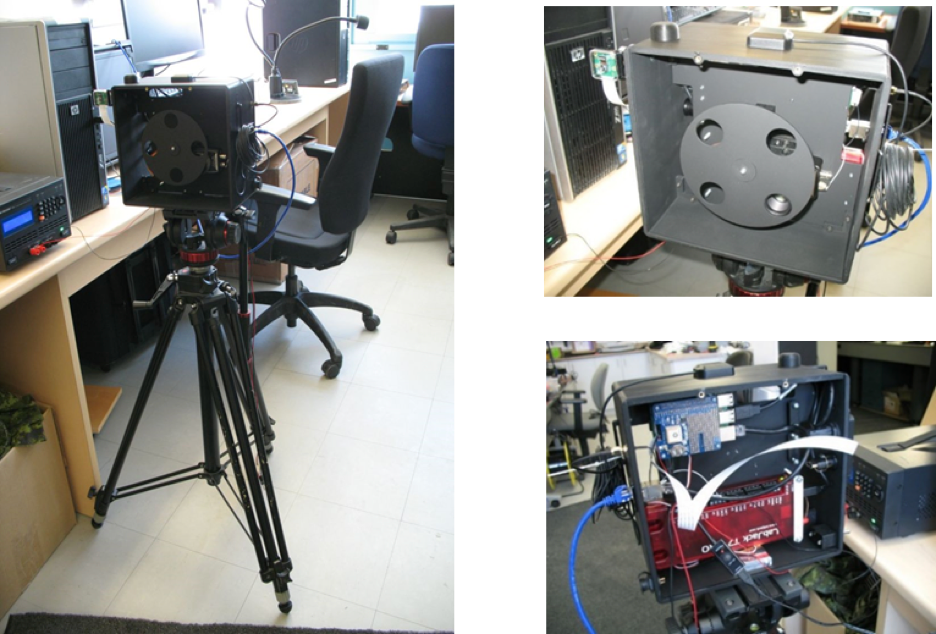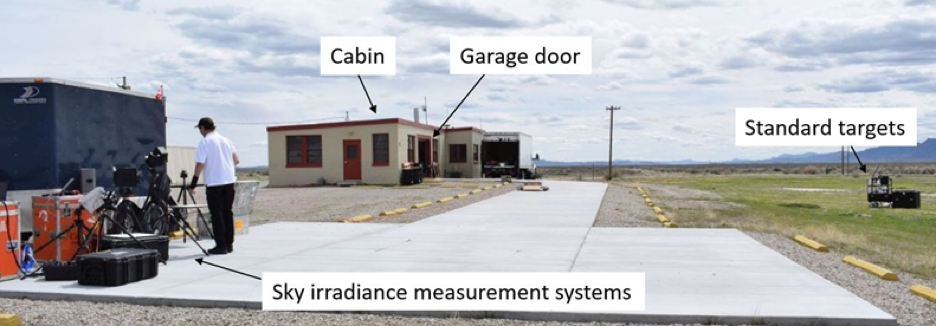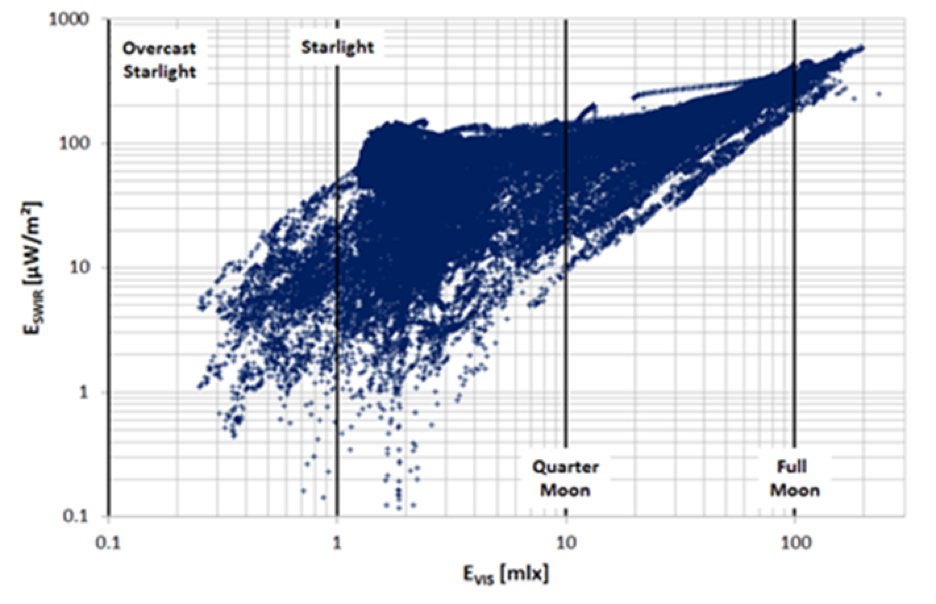Newly released work from the NATO Science and Technology Organization (STO) proposes a standardised, low-cost model for measuring and evaluating reflective band systems – a key component of shortwave infrared (SWIR) imaging technology. The work, carried out by a Research Task Group (RTG) in the Sensors and Electronics Technology (SET) Panel, marks an important advancement in a rapidly advancing field of imaging technology that holds tremendous promise for military applications.
SWIR technology offers several advantages over visible- to near-infrared-based systems, which are typically used in night-time operations. SWIR-based cameras, for example, provide key advantages over traditional night vision goggles, such as a new detection band for day and night operation, and the ability to render images in digital formats. So far, however, there is little understanding of how highly variable irradiance levels behave in SWIR bands, and how these levels may affect nightglow. Night illumination levels for visible- to near-infrared are highly standardised, allowing operators to estimate irradiance under different conditions (e.g. starlit skies, or under a full moon). Without such an understanding of SWIR irradiance, it is not possible to predict how SWIR-based cameras will behave under different conditions, or to compare SWIR cameras with other systems.
One of the main challenges to measuring SWIR irradiance is the lack of access to SWIR equipment for data collection, which is typically cost-prohibitive. To overcome this, the SET RTG (SET-246) designed and built a low-cost SWIR meter made from commercial off-the-shelf (COTS) parts (see Figure 1). The meters were then tested in a joint data collection campaign held in 2019, and results were compared to data collected by more expensive SWIR irradiance measurement units currently available on the market.

Figure 1: Pictures showing one of the COTS low cost irradiance measurement units.
The joint data collection campaign was held at a very dark site with little cultural illumination in western North America. In order to ensure accuracy in equipment calibration and valid data processing across all participating nations, the team collected data at the same location under identical sky and environmental conditions over the course of four nights. Figure 2 provides a snapshot of how the field collection was set up.
To expand the range of data collected, the RTG encouraged participating nations (Canada, France, Germany, Netherlands, Norway, Slovenia, Sweden, Türkiye, United Kingdom, United States) to collect irradiance data in a range of locations across different seasons, lunar cycles and levels of cultural lighting contamination (with the exception of direct lighting on the measurement system). Each nation was encouraged to collect these data with their own equipment, or to build and test the COTS SWIR meter designed by the RTG.

Figure 2: Field collection set up showing the sky irradiance measurement systems, facility and standard targets for the broadband cameras.
These data were gathered in 2019, and the RTG made strong progress on characterising SWIR irradiance measurements and developing new standards. While more data is needed, initial results show that the COTS SWIR meter data compares favourably to more expensive SWIR irradiance meters currently available.
Although their work is still in progress, the team believes that this COTS SWIR meter will make it easier many other countries and organisations to collect large quantities of irradiance data. They have also learned valuable lessons based on their initial experiments. For example, it may not be necessary to conduct the data collection in a very dark site with minimal cultural illumination, and it may also be beneficial to schedule multiple joint campaigns (either in the field or in the laboratory) to improve collaboration and data correlation.
Another key lesson is that there is a strong need for as much different distributed data as possible. This will ensure a sufficiently large statistical sample size to generalize what conditions a user might realistically expect to encounter, and would help to define "benchmark" levels of irradiance at which new equipment could be tested to allow for comparison.

Figure 3: SWIR irradiance vs. visible illuminance, measured March-December 2019. Overlaid are the defined visible illumination levels from the RCA Electro-Optics Handbook (1974).
The RTG's findings underscore the significant need for more research in this area, in order to bring measurements of SWIR irradiance to the level of visible-near IR irradiance measurements. A larger data set would allow for a robust statistical analysis of SWIR irradiance data – particularly with respect to different weather, geographic, and cultural lighting situations – and the COTS SWIR meter developed by the RTG can help facilitate its growth. Once this is completed, and measurements are standardised, military operators will be able to more accurately compare SWIR-based cameras with other imaging technology, which will help inform decisions on the battlefield.
SET-246 Team:
C.A. Moore (C5ISR Center-USA), U. Adomeit (IOSB-DEU), T. Clark Martins (DSTL-GBR), S. Derelle (ONERA-FRA), P. Laou (DRDC-CAN), P. Simoneau (ONERA-FRA), T. Skauli (FFI-NOR), T. Svensson (FOI-SWE)
Published by SET |
